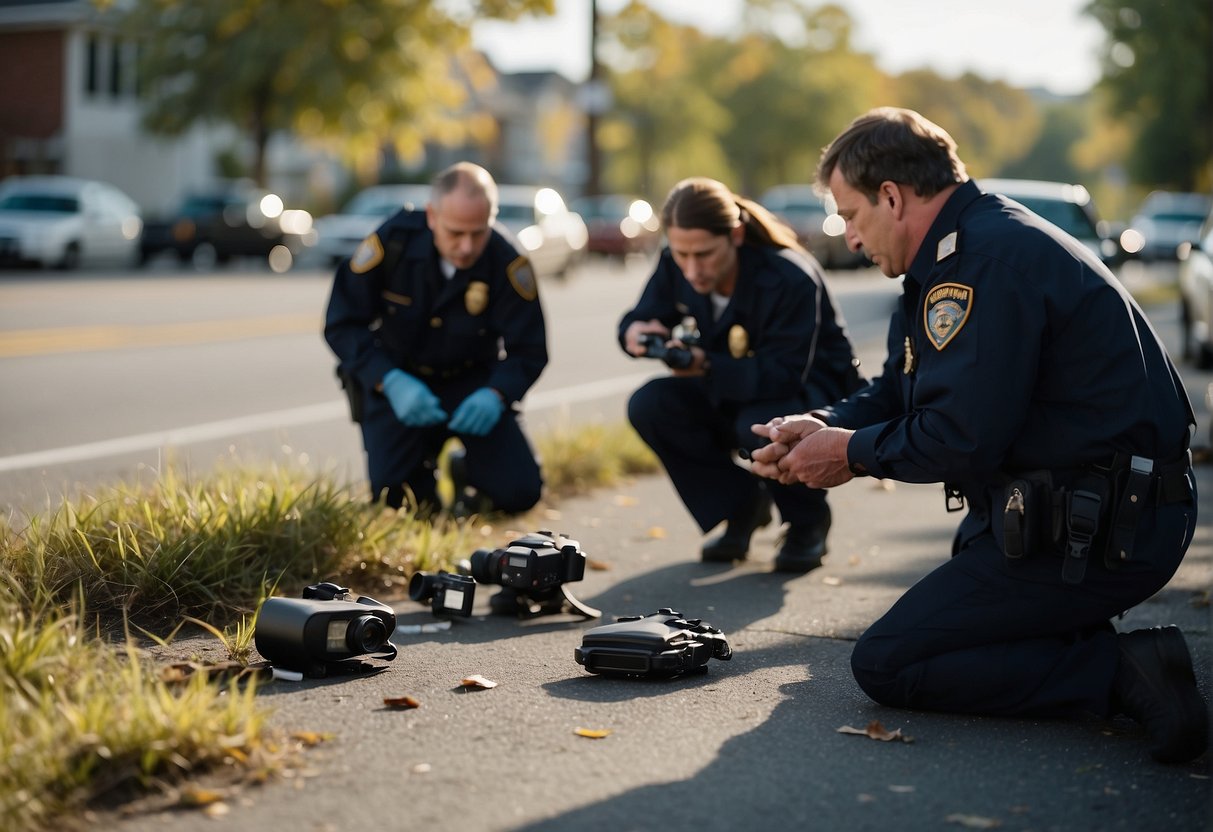Understanding Personal Injury Lawsuits

In handling a personal injury lawsuit, understanding the key principles of personal injury laws and the implications of liability and negligence is crucial for both plaintiffs and defendants. We need to navigate legal proceedings with a clear grasp of our roles and the burden of proof to seek or contest claims for compensation effectively.
Definition and Nature of Personal Injury Laws
Personal injury laws are designed to provide a legal framework for compensating individuals who have sustained injuries due to another party’s actions or negligence. When we refer to a personal injury lawsuit, we’re talking about a civil legal dispute where the injured party, the plaintiff, seeks compensation from the defendant, the party alleged to be liable for causing the injury. These laws enable the plaintiff to receive monetary compensation to cover medical expenses, lost wages, and pain and suffering. Our personal injury attorneys play a pivotal role in guiding us through these intricate legal processes, ensuring our rights are protected, and building a strong case grounded on evidentiary support.
Roles of Liability and Negligence
In the realm of personal injury lawsuits, liability and negligence are foundational concepts that determine the outcome of legal proceedings. Negligence refers to the failure to take reasonable care to avoid causing injury or loss to another person. As plaintiffs, we bear the burden of proof to establish the defendant’s negligence in causing the injury. This involves showing that:
- The defendant owed us a duty of care.
- There was a breach of that duty.
- The breach caused our injuries.
- We suffered damages as a result.
Our lawyers meticulously gather and present evidence to prove these elements. Conversely, as defendants, we require a skilled attorney to challenge the plaintiff’s claims and demonstrate that liability should not rest on us. The interplay between liability and negligence ultimately dictates the direction of the lawsuit and the potential for us to either receive or avoid paying out compensation.
Evidence Collection Strategies

In a personal injury lawsuit, our ability to collect and present strong evidence is crucial to supporting your claim. We must approach evidence collection systematically, ensuring that all relevant material is identified, preserved, and ready for presentation.
Identifying Types of Evidence
To build a compelling case, we must first identify various types of evidence that are pertinent to personal injury claims. This includes photographs and videos of the scene of the accident, witness statements, medical records, police reports, and any surveillance footage that captured the event. Real evidence includes tangible items from the scene, while demonstrative evidence can consist of diagrams or models that help illustrate an incident or injury. Testimonial evidence involves accounts from witnesses and experts. Our objective is to compile a comprehensive catalogue of all available personal injury evidence that will substantiate your claim.
Preserving Evidence at the Accident Scene
Preservation of evidence is critical and should commence immediately after the accident. Our steps include swiftly taking photos and recording videos to capture the environment and context. This visual evidence serves as irrefutable proof of the conditions at the time of the incident. If possible, we’ll secure any physical evidence, such as damaged property or clothing. We’ll also emphasize the importance of not altering the scene until photographs have been taken and ensure that all real evidence is collected and stored properly.
Gathering Documentation and Records
Documenting and amassing records is a meticulous process, but it’s vital to establish the facts of the case. Our comprehensive collection will include all medical records that detail the injuries sustained and treatments received. We’ll also gather all relevant documents such as employment records for lost wages claims, along with bills and receipts related to the injury. Documentary evidence is essential in proving both the extent of the injuries and the financial impact.
Techniques for Recording Witness Testimonies
Witness testimonies can be pivotal in a personal injury lawsuit. We’ll employ proven techniques to obtain and record their accounts. We’ll promptly identify potential witnesses and secure their statements, which may include written accounts or recorded testimonies. It’s important to do this as soon as possible while the incident is fresh in their minds. We’ll also prepare to depose witnesses and, if necessary, we’ll use more formal procedures to preserve their testimonies for trial.
Medical Evidence and Expenses

We’ll focus on the indispensable role that medical records play in substantiating your personal injury lawsuit and the methodology for calculating the economic damages resulting from your injuries.
Importance of Medical Records
Medical records are critical evidence that detail the nature and extent of your injuries. They serve as concrete proof, directly linking your injuries to the incident in question. It is essential that we gather all medical documentation—this includes diagnostic reports like X-rays, CT, or MRI scans, as well as details of all treatments received from healthcare providers. Impeccable records strengthen the claim, demonstrating the severity of injuries and the impact on your daily life.
Calculating Economic Damages
When it comes to economic damages, we meticulously itemize every expense to ensure no financial impact is overlooked. This encompasses:
- Medical bills: We tally all costs associated with your medical care, including past and future bills.
- Lost wages: Documentation of time missed from work due to the injury helps us claim compensation for lost wages.
A proper assessment of economic damages is paramount for a fair settlement, including compensation for ongoing medical care and related bills. Pain and suffering, although more complex, also form a substantial part of the claim, reflecting the non-economic impact of your injuries.
Legal Steps and Settlement Process
In paving the way to a successful personal injury lawsuit, we must meticulously navigate legal procedures and interact effectively with insurance companies to reach a potential settlement.
Filing the Lawsuit
To initiate a lawsuit, we file a complaint in court where we detail our injuries and allege that the at-fault party’s negligence is to blame. This step formally announces our legal action and triggers the onset of legal timelines and obligations for both parties. Prompt and precise filing is critical, as missing deadlines can jeopardize our case.
Negotiations with Insurance Companies
Before and sometimes parallel to court proceedings, we engage in negotiations with insurance adjusters. It’s our role as your personal injury lawyers to draft a demand letter outlining the damages and negotiate the best possible settlement for you. Our experience with insurance company tactics ensures we’re prepared to counter low settlement offers and aim for the compensation you deserve.
Trial Preparation
If negotiations don’t lead to a satisfactory settlement, we prepare for trial. This preparation includes gathering evidence, formulating legal strategies, and rehearsing persuasive arguments to present in front of the jury and judge. As we approach the trial date, every step, from witness depositions to evidence admission, is a deliberate move toward strengthening our position in court.
During this process, we’ll keep clear lines of communication open with you to ensure that you’re informed and empowered throughout your personal injury legal procedures.
Maximizing Your Claim’s Potential
When we pursue a personal injury claim, our aim is to secure the highest possible compensation for the injuries and losses sustained. The strength of our case is pivotal in negotiating a payout that truly reflects the physical, emotional, and financial hardships we’ve endured.
Building a Strong Case
To build a robust case, diligent evidence-gathering is essential. We need to compile every piece of evidence from the scene of the incident, medical reports confirming our injuries, to testimonies from witnesses. Photographs of the scene and our damaged property serve as crucial visual proofs, while documentation of lost wages adds a tangible number to our economic losses. It’s important that we hold onto receipts related to any expenditures caused by the injury, as well as reports that can substantiate claims of pain and emotional distress.
- Visual Proof: Photos and videos from the incident scene.
- Medical Documentation: Records of injuries, diagnoses, treatments, and prognoses.
- Financial Records: Proof of lost income and other financial impacts.
- Witness Statements: Testimonies corroborating our version of events.
Understanding Compensation Limits and Opportunities
Our compensation largely depends on understanding the interplay between proven losses and legal limits. Some jurisdictions cap non-economic damages, which include compensation for pain and suffering or emotional distress. Knowing these limits is crucial in setting realistic expectations for our potential payout. However, we can explore opportunities within these confines through precise calculation of damages and by presenting a compelling case to the jury that emphasizes the full extent of our hardships.
- Economic Damages: These are our tangible losses, such as medical bills and lost earnings.
- Non-Economic Damages: These relate to non-quantifiable losses like pain and suffering.
- Punitive Damages: In some cases, if the defendant’s conduct was especially harmful, we could be awarded additional sums.
By focusing on robust evidence and leveraging legal knowledge of compensation limits, we put ourselves in a stronger position to maximize the potential of our claim.




